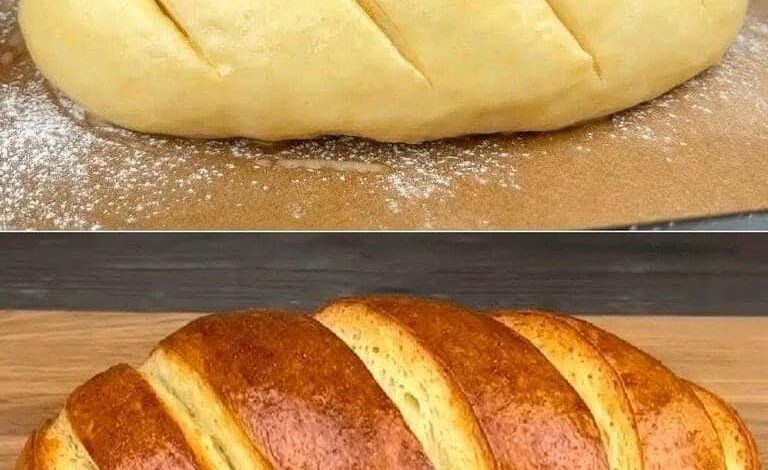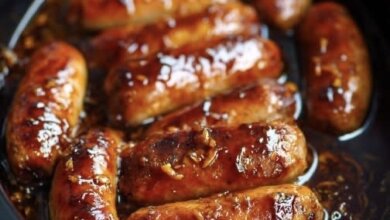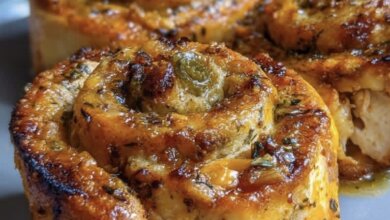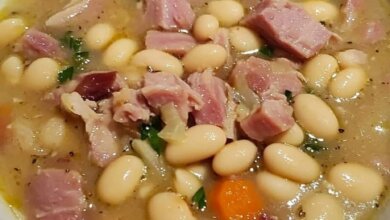Milk Bread Recipe

Milk Bread Recipe: A Timeless Classic
Milk bread is a soft, fluffy, and slightly sweet bread that originated in Japan but has gained popularity worldwide. Known for its tender crumb and rich flavor, this bread is perfect for breakfast, sandwiches, or simply enjoyed with butter and jam. The inclusion of milk in the dough gives it a unique texture and flavor, making it a favorite among bread lovers.
History of Milk Bread
Milk bread, also known as “Shokupan” in Japan, dates back to the 19th century when Western-style bakeries started appearing in Japan. It is inspired by Hokkaido milk, famous for its high quality and creaminess. Over time, this bread evolved and spread to other parts of Asia, becoming a staple in many bakeries for its soft texture and light sweetness.
Ingredients
- 2 ½ cups all-purpose flour
- 1 cup milk (warm)
- ¼ cup sugar
- 2 ¼ tsp active dry yeast (1 packet)
- ¼ cup unsalted butter (softened)
- 1 tsp salt
- 1 large egg (optional, for extra richness)
Instructions
- Activate the Yeast: In a small bowl, combine the warm milk and sugar. Sprinkle the yeast over the top and let it sit for about 5-10 minutes until it becomes frothy. This step is crucial as it ensures the yeast is alive and active.
- Mix the Dough: In a large bowl, whisk together the flour and salt. Make a well in the center and pour in the yeast mixture and softened butter (and egg if using). Mix the ingredients until a dough forms.
- Knead the Dough: Transfer the dough to a floured surface and knead for about 8-10 minutes, or until the dough is smooth and elastic. Kneading helps to develop the gluten, which gives the bread its structure and chewiness.
- First Rise: Place the dough in a lightly greased bowl, cover it with a damp cloth, and let it rise in a warm place for about 1-1.5 hours, or until it has doubled in size.
- Shape and Second Rise: Punch down the dough to release the air. Shape it into a loaf or divide it into smaller portions if you prefer. Place it in a greased loaf pan or on a baking sheet, cover, and let it rise again for about 30-45 minutes.
- Bake: Preheat your oven to 350°F (175°C). Bake the bread for 25-30 minutes, or until the top is golden brown and the bread sounds hollow when tapped. This ensures the bread is cooked thoroughly.
- Cool: Let the bread cool in the pan for a few minutes before transferring it to a wire rack to cool completely. Cooling on a wire rack helps to prevent the bottom from becoming soggy.
Nutritional Information (Per Slice)
- Calories: 150-180 (depending on the size)
- Carbohydrates: 28g
- Protein: 4g
- Fat: 4g
- Fiber: 1g
- Sugar: 4g
- Calcium: 30mg
- Iron: 1mg
Benefits of Milk Bread
Milk bread contains essential nutrients such as calcium and protein from the milk and eggs, making it more nutritious than regular white bread. Its soft texture makes it easy to digest, making it suitable for all ages. Milk bread can also be enjoyed on its own, toasted, or used as a base for various dishes like French toast or bread pudding.
Formation Techniques
Milk bread can be shaped into different forms, from traditional loaves to rolls or braids. Adding raisins, nuts, or even chocolate chips can enhance the flavor and make the bread more special. Another popular variation is creating a swirl of cinnamon sugar within the loaf for a sweet touch.
Why Bread Lovers Adore Milk Bread
Milk bread has a devoted following because of its pillowy softness, slightly sweet taste, and versatility. Bread enthusiasts appreciate its unique texture, which differs from traditional Western bread. It’s an ideal canvas for various toppings and spreads and is perfect for sweet and savory pairings.
Tips for Success
- Use Warm Milk: Using warm milk helps to activate the yeast properly, ensuring the bread rises well.
- Knead Thoroughly: The dough needs to be kneaded adequately to develop the gluten, which gives the bread its fluffy texture.
- Don’t Rush the Rise: Letting the dough rise fully is essential for achieving the airy crumb characteristic of milk bread.
Conclusion
Milk bread is more than just a loaf; it’s a comforting and versatile staple that brings a taste of Japanese baking tradition to your kitchen. With its tender texture, subtle sweetness, and adaptability, it’s a delight for both experienced bakers and novices. Whether you enjoy it plain, toasted, or filled with sweet or savory ingredients, milk bread is sure to become a favorite in your household.
For the Lovers of Milk Bread
Milk bread has won the hearts of bread enthusiasts worldwide, not just for its flavor but also for its nostalgic comfort. Whether used for sandwiches, French toast, or simply enjoyed with a bit of butter, milk bread’s soft texture and rich taste make it irresistible.
Final Thoughts
If you haven’t tried making milk bread yet, give this recipe a go. It’s an experience that brings joy to baking and eating alike. Let the fluffy, soft texture and subtle sweetness of milk bread become a beloved addition to your baking repertoire.



